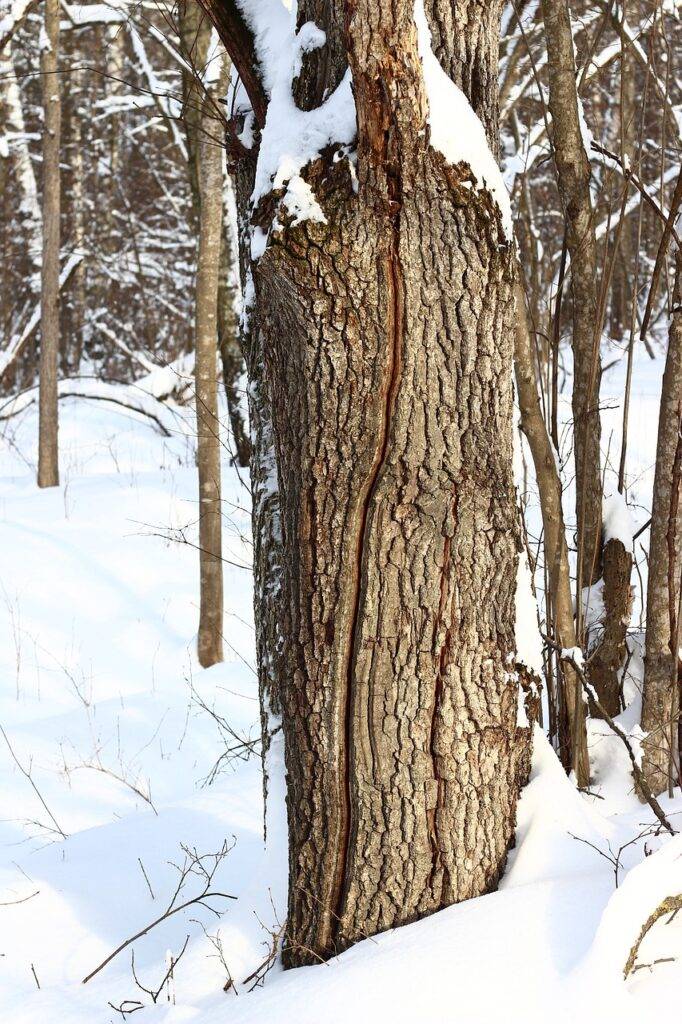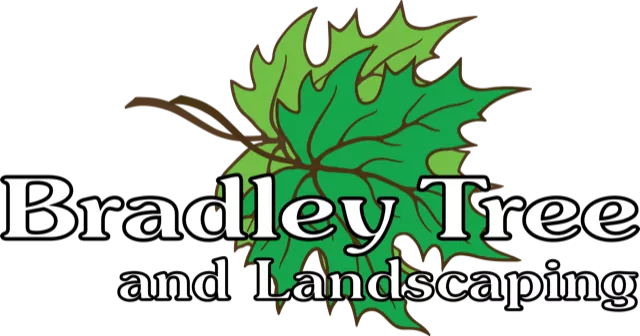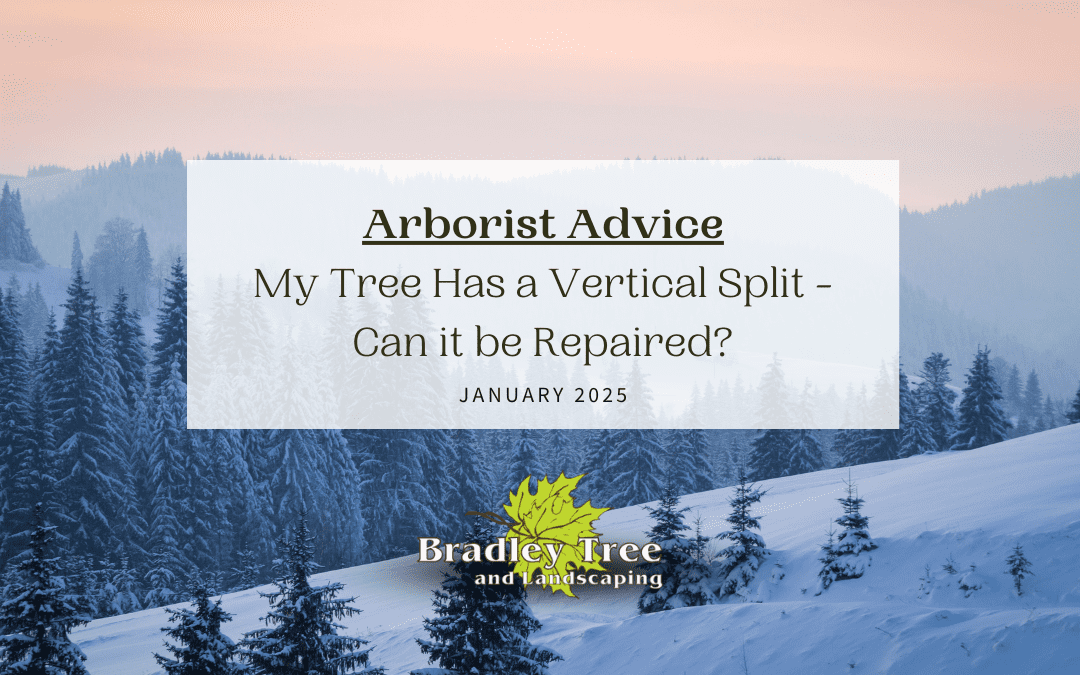Trees are a vital part of your property, adding beauty, shade, and value to your landscape. But what happens when you notice a vertical split running along your tree trunk? Is it a death sentence for your tree, or can it be repaired? Let’s explore the causes of vertical splits, how to address them, and steps you can take to protect your trees for years to come.
Common Causes for Vertical Tree Splits
Extreme Weather Conditions in Buffalo and WNY
Buffalo’s harsh winters and unpredictable weather can take a serious toll on your trees. Heavy snow, freezing rain, and strong winds often stress tree trunks, leading to vertical splits. This is particularly common after storms, as the pressure from the elements can overwhelm a tree’s natural defenses.
Rapid Temperature Fluctuations
Another major culprit in Western New York is rapid temperature shifts. During the colder months, a sudden warm spell can cause tree bark to expand. When temperatures drop again, the bark contracts too quickly, resulting in cracks or vertical splits. This process, known as “frost cracking,” is especially problematic for certain tree species like maples and oaks.
Can a Tree with a Vertical Split Be Repaired?
Assessing the Severity of the Damage
Not all vertical splits are created equal. The first step in determining whether your tree can be repaired is to assess the damage. Is the split shallow and confined to the bark, or does it extend deep into the trunk? Minor splits are often cosmetic and heal naturally over time, but deeper splits can compromise the tree’s structural integrity and require immediate attention.
Factors That Determine Repair Viability
Several factors influence whether a tree can recover from a vertical split:

- Tree Species: Some trees, like beech and hickory, are less prone to splitting and recover more easily.
- Age and Size: Younger, smaller trees have more energy to devote to healing than older, larger ones.
- Extent of the Split: A narrow, confined split is far easier to repair than one that extends around the trunk or reaches into major limbs.
Trees native to the WNY region, such as sugar maples and American basswoods, are more resilient to splits and can often recover with proper care.
Repairing a Vertical Split in a Tree
In many cases, a tree with a minor split can heal on its own if given the right conditions. However, larger splits often require intervention. Here’s how to handle them:
- Cabling and Bracing: For severe splits, professional arborists use cables or rods to stabilize the trunk and prevent further damage. This technique supports the tree while it naturally heals over time.
- Wound Care: Gently clean any loose bark around the split to prevent further peeling. In some cases, applying a tree-friendly sealant can protect the area from pests and disease.
- Promoting Healing: Ensure the tree gets adequate water and nutrients to support its recovery. Mulching around the base can help retain soil moisture and regulate temperature.
When to Call a Professional Arborist in Buffalo
Signs You Need Expert Help
If you’re feeling uncertain about the split in your tree, there are definitely some clear signs that suggest it might be time to reach out for professional help. However, we strongly encourage you to give us a call if you’re not quite sure! Whether there’s a concern with your tree that we can assist you with or if you just need some tips for smaller at-home solutions, we’re here to help!
- The split extends deep into the trunk or reaches major branches.
- The tree is leaning or showing signs of instability.
- You notice pests, fungi, or rot near the split.
The Role of ISA-Certified Arborists
An ISA-certified arborist has the training and experience to properly evaluate and treat tree damage. They can recommend solutions tailored to your specific tree species and the unique challenges of WNY’s climate.
Local Expertise You Can Trust
Hiring a Buffalo-based tree care service ensures that your arborist understands the local environment and tree species. Our team is familiar with the weather-related stresses that impact trees in WNY and can provide expert care to help your tree thrive.
Preventing Future Vertical Splits
Proper Pruning Techniques
Over-pruning can weaken trees and make them more susceptible to splitting. Schedule regular pruning with a professional to remove dead or diseased branches without over-stressing the tree.
Protecting Trees from Buffalo’s Harsh Winters
Take proactive steps to shield your trees from winter damage. Wrapping tree trunks with burlap or using protective tree guards can reduce the risk of frost cracking. Additionally, applying a thick layer of mulch around the base helps insulate roots and retain moisture.
Ongoing Tree Health Monitoring
Regular tree inspections by a professional can identify potential issues before they become serious. Catching early signs of stress, disease, or pest infestations can prevent problems like vertical splits from occurring in the first place.
Bradley Tree is Here to Help!
While a vertical split can be alarming, it’s not always the end for your tree. Many splits can be repaired with timely intervention and proper care. For deeper or more severe damage, professional arborists in Buffalo and WNY are ready to help.
Don’t forget to stay up to date with your favorite Buffalo arborists by following us on our blog and on Facebook, Instagram, and YouTube! Reach out today by phone or using our online contact form. Are your trees ready to face the cold? If not, now is the perfect time to take action. Schedule a consultation with a local arborist and give your trees the care they deserve—because healthy roots mean healthy trees.
If you’re dealing with a vertical split or have concerns about your tree’s health, don’t wait. Contact us today for a consultation or tree health assessment, and let’s work together to preserve the beauty and safety of your landscape.

